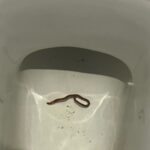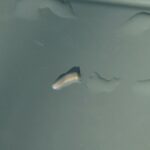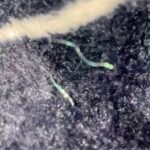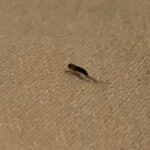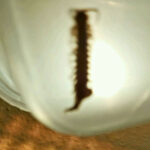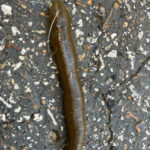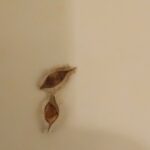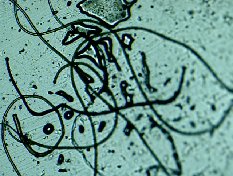A slug is a mollusk. A mollusk is an invertebrate that belongs to the Phylum Mollusca. Unlike worms, a mollusk (slug) has a soft unsegmented body that consists of a visceral body of matter that contains the slug’s internal organs. According to Encyclopedia Britannica, slugs may have a shell that has been reduced to an internal plate, a shell that is made up of a series of granules, or no shell at all. So, no – a slug is not a worm, but it is very easy to confuse the two.
For starters, the slug and the earthworm require a moist environment on land for survival. Another similarity is, there are a few species of worm that actually can survive in water. There is one known freshwater species of slug. Another similarity is, some slug species eat plants, which can be damaging to gardens. Hundreds of worm species do the same. In addition, many species of both worms and slugs eat decaying matter.
A large majority of plant-eating slugs called Veronicellidae can be found in tropical areas. Other types of slugs may be carnivorous. These slugs, including Testacellidae (Europe), actually eat earthworms and snails.
How to Control Slugs
If you have a slug problem, chances are any leaves, fruit, or the crowns of your plants have been damaged or completely consumed. Slugs have a hearty appetite and it is common for a slug to consume several times its body weight in a single feeding rampage. Slugs will target dense areas where plants are bunched and closer to the ground. They also seek out areas with poor circulation.
To control slugs, Gardenguides.com suggests sowing plants with ample circulation. This will expose the plants to heat and fresh air, creating an environment that is just the opposite of the cool, damp areas slugs like to hide in. You may also use tactics such as staking and caging plants so they are higher off the ground.
Repellants include pine needles, cedar chips, copper strips, and a mixture of ammonia and water. You can also trick the slugs into hiding under an empty pot, making them easier to catch and spray.
Slugs also have a number of natural predators such as birds. Although most slugs are active when birds are not, the presence of birds may still scare the slugs away. To attract birds, simply hang a bird feeder where slugs are most likely to hide.
To compare images of worms, slugs, and snails, visit any of the following websites:
http://uspest.org/potato/slugs.html
Sources
Slug. (2010). In Encyclopædia Britannica. Retrieved October 25, 2010, from Encyclopædia Britannica Online: http://www.britannica.com/EBchecked/topic/549215/slug
How to Get Rid of Slugs and Snails. (2010). On Garden Guides. Retrieved October 25, 2010, from Garden Guides Online: http://www.gardenguides.com/826-rid-slugs-snails-garden-pest-tip.html
All About Worms is always free, always reader-supported. Your tips via CashApp, Venmo, or Paypal are appreciated! Receipts will come from ISIPP Publishing.



